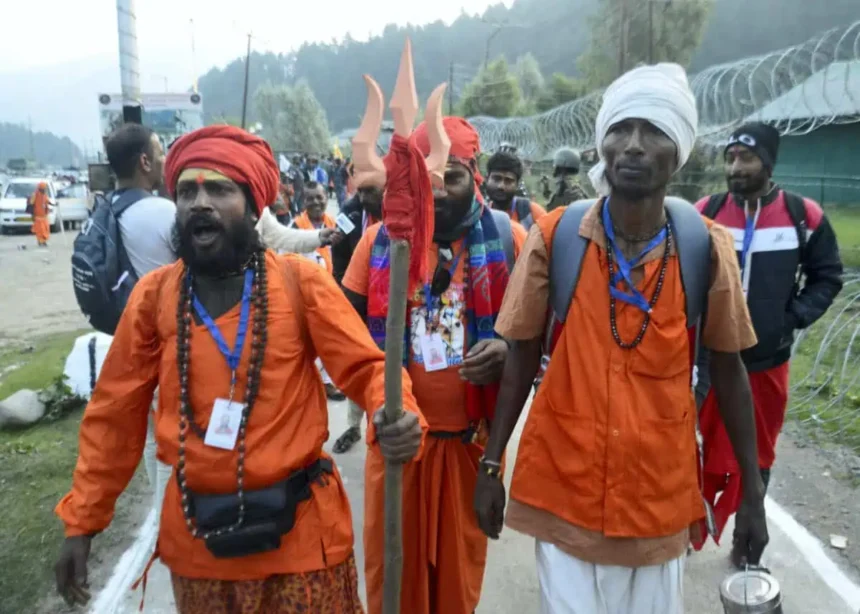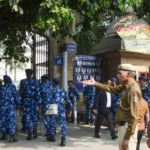Over 3.83 lakh pilgrims have undertaken the ongoing Amarnath Yatra so far, with 12 days remaining for the annual Himalayan pilgrimage to conclude.
This year’s Yatra has witnessed a strong turnout of devoted pilgrims, taking place in a highly secure, peaceful, and well-coordinated setting.
Officials reported that another batch of 1,490 pilgrims departed from Jammu on Tuesday in two escorted convoys bound for Kashmir.
The first convoy, consisting of 16 vehicles carrying 327 pilgrims, left at 3:25 a.m. for the Baltal base camp. The second convoy, comprising 45 vehicles and 1,163 pilgrims, departed at 3:57 a.m. for the Pahalgam base camp.
On the occasion of Nag Panchami, the traditional ‘Chhari Pujan’ ceremony of Lord Shiva’s holy mace (Chhari Mubarak) was held at the Amareshwar Temple in Srinagar.
The final journey of the Chhari Mubarak toward the holy Amarnath cave shrine is scheduled to begin on August 4. Traditionally housed at the Amareshwar Temple in Dashnami Akhara, Budshah Chowk, Srinagar, the Chhari Mubarak follows a spiritual route that marks key milestones of the annual pilgrimage.
As per tradition, en route to the cave shrine, rituals and prayers will be performed at Pampore, Bijbehara, Mattan, and Pahalgam. The Chhari Mubarak will reach the sacred cave on August 9, marking the official conclusion of this year’s Yatra.
Security arrangements have been significantly heightened following the April 22 terror attack in Pahalgam, in which Pakistan-backed militants killed 26 civilians after singling them out by faith.
To ensure pilgrims’ safety, an additional 180 companies of Central Armed Police Forces (CAPFs) have been deployed to support the Army, BSF, CRPF, SSB, and local police. Over 8,000 Army commandos are also on the ground to secure the routes.
This year’s Amarnath Yatra, which began on July 3, will conclude on August 9, coinciding with Shravan Purnima and Raksha Bandhan.
Pilgrims reach the holy cave shrine—located 3,888 metres above sea level—via two routes: the traditional Pahalgam route, which involves a 46 km trek over four days through Chandanwari, Sheshnag, and Panchtarni; or the shorter Baltal route, a 14 km trek that allows for same-day return after darshan.
Due to security concerns, helicopter services have not been made available to pilgrims this year.
The cave shrine houses a naturally formed ice stalagmite, which waxes and wanes with the lunar cycle. Devotees believe the formation symbolizes the divine presence of Lord Shiva. (Media reports)









